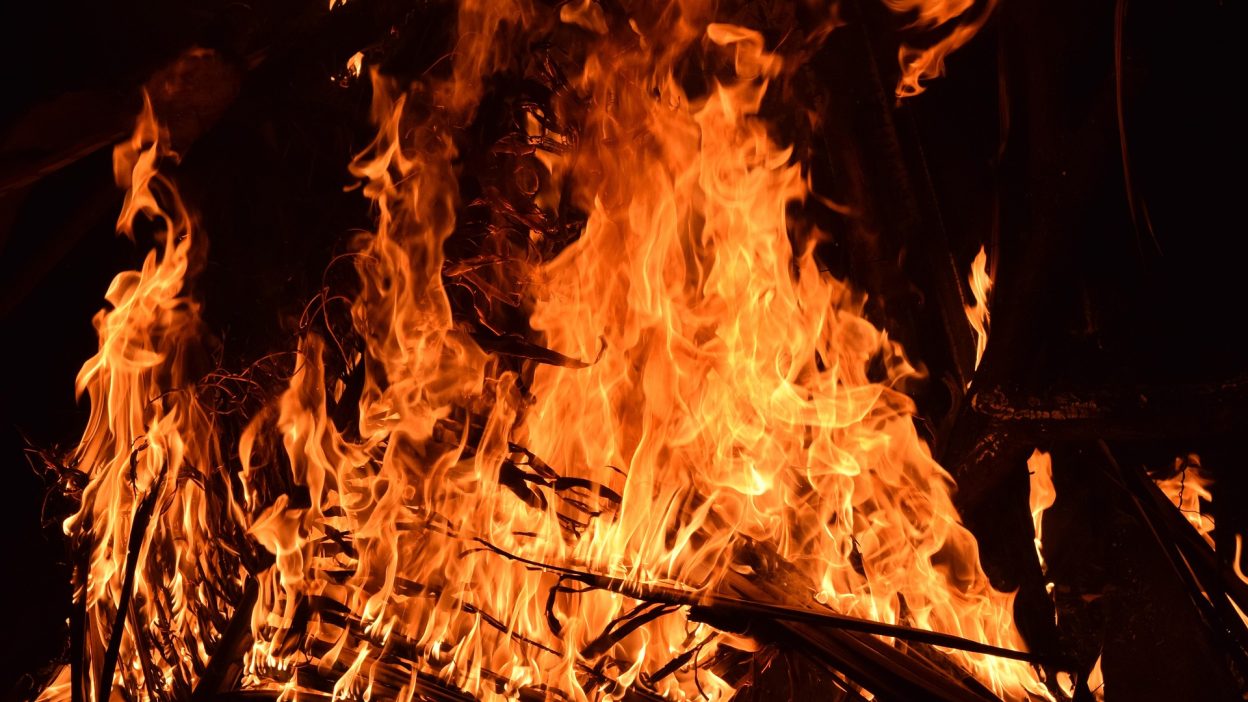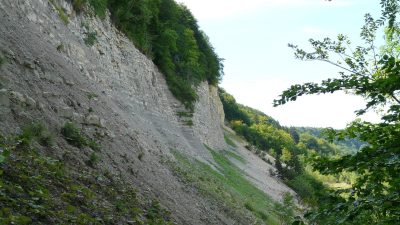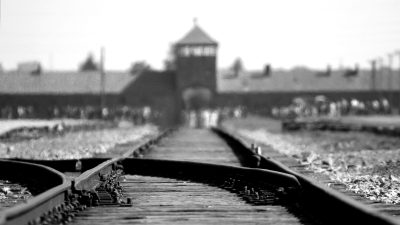The Day Minnesota Became an Inferno
1. A Town Turned to Ashes: How the Hinckley Fire of 1918 Became a Nightmare
On September 10, 1918, an ordinary day in Hinckley, Minnesota, turned into a horrifying nightmare as one of the most devastating wildfires in American history erupted. Within hours, the town and its surroundings were engulfed in a blazing inferno, leaving behind a scene of utter destruction.
This was no ordinary fire—it was a firestorm, a hellish combination of scorching heat, strong winds, and dry conditions that transformed Hinckley into a burning graveyard. The blaze moved at terrifying speeds, swallowing entire neighbourhoods, incinerating people where they stood, and leaving survivors trapped in a desperate fight for their lives.
The Hinckley Fire did not simply happen—it was a disaster years in the making. Human negligence, corporate greed, and environmental mismanagement had turned the region into a ticking time bomb. When the flames finally died down, the question remained: was this a natural disaster, or was it something far worse—an avoidable tragedy caused by human recklessness?
2. Who Was to Blame? Did Industry and Greed Turn Hinckley Into a Death Trap?
While wildfires are often caused by natural factors, the 1918 Hinckley Fire was not purely an act of nature. Instead, it was fuelled by human exploitation of the land.
For decades, logging companies had stripped the forests bare, leaving behind a landscape littered with dry branches, sawdust, and tree stumps—all highly flammable materials. This careless deforestation turned the region into a powder keg, waiting for a single spark to ignite catastrophe.
To make matters worse, railway operations in the area were known to produce sparks, a common cause of wildfires. Despite frequent warnings, train companies failed to implement basic fire prevention measures. When the fire finally ignited, the conditions were so perfect for a disaster that nothing could stop the flames from consuming everything in their path.
The greed of timber and railway industries, combined with poor fire management, made the Hinckley Fire not just a tragedy—but a crime against the people who lived there.
3. The True Cost of the Inferno: How Many Lives Were Really Lost?
The death toll from the Hinckley Fire is a matter of grim debate. While official records exist, many believe the real number of victims was much higher than reported.
- Official Death Count: At least 418 people were confirmed dead, but many bodies were burned beyond recognition, making an accurate count difficult.
- Unaccounted Victims: The fire spread through areas populated by migrant workers, Native American communities, and loggers, many of whom were never officially counted in death records.
- Injuries and Trauma: Hundreds of survivors suffered severe burns, lung damage from smoke inhalation, and long-term psychological scars.
- Property Destruction: The fire wiped out over 250,000 acres of land, destroying thousands of homes, businesses, and entire towns.
- Survivors’ Ordeal: Many people were left homeless, destitute, and without any means of rebuilding their lives.
The true scale of devastation remains unknown, but one thing is clear—the Hinckley Fire was one of the deadliest in U.S. history.
4. Trapped in the Flames: How People Fought for Their Lives
For those caught in the Hinckley Firestorm, survival was a matter of luck, desperation, and sheer determination. The speed and intensity of the flames meant that escape routes vanished within minutes, leaving people to make impossible choices.
Some tried to outrun the fire, only to be overtaken by walls of flames moving faster than a person could run. Others hid in wells, lakes, and rivers, submerging themselves in water as the fire roared above them. However, even water could not always save them—many people suffocated from the intense heat and smoke.
One of the most remarkable survival stories involved a train carrying over 300 passengers, which barely escaped the inferno. As flames licked at the sides of the train, the conductor ordered passengers to lie flat on the floor and cover themselves with wet cloths. By a stroke of luck, the train pushed through the blaze, saving many—but not everyone made it out alive.
For countless others, there was no escape. Entire families burned alive in their homes, choked to death in smoke-filled basements, or died trying to flee on foot. The fire did not discriminate—it consumed men, women, children, and the elderly alike.
5. Could the Government Have Prevented This Disaster?
Long before the flames ignited, warnings were ignored. Reports of dry conditions, high temperatures, and increasing fire risks had been raised months before the disaster. Yet, authorities failed to act, dismissing the concerns as exaggerated fears.
- No firebreaks were created.
- No evacuation plans were in place.
- No proper firefighting resources were allocated.
When the fire struck, officials were completely unprepared. Communication was slow and inefficient, meaning that by the time news of the fire spread, entire towns had already been wiped off the map.
After the fire, the government’s relief efforts were painfully inadequate. Survivors were left homeless, hungry, and without medical aid for days before meaningful assistance arrived. It was yet another example of how governments only react when it is too late—a pattern still seen in modern disasters.
6. Hinckley in Ruins: A Town That Disappeared in a Day
By the time the flames died down, Hinckley was gone. What was once a thriving community had been reduced to a barren wasteland, with only charred remains of buildings and blackened corpses left behind.
Mass graves had to be dug for the victims, as the sheer number of bodies made individual burials impossible. Survivors who returned to the town found nothing but destruction.
Though Hinckley was eventually rebuilt, the scars of the fire never fully healed. Even today, memorials stand as reminders of the lives lost, ensuring that the tragedy is never forgotten.
7. Could Another Hinckley Fire Happen Again?
The factors that made the Hinckley Fire possible still exist today:
- Climate change has increased the risk of wildfires, making conditions even worse than in 1918.
- Logging industries continue reckless deforestation, leaving behind the same flammable debris that fueled the inferno.
- More people now live in fire-prone areas, meaning the next wildfire could be even deadlier.
- Governments still fail to take wildfire threats seriously, waiting until tragedy strikes before acting.
Experts warn that without serious fire prevention efforts, another Hinckley-style disaster is not just possible—it is inevitable.
8. Why Has History Forgotten the Hinckley Fire?
Despite the catastrophic scale of destruction, the 1918 Hinckley Fire has largely been forgotten in mainstream historical records. While events like the Great Chicago Fire of 1871 and California’s wildfires frequently make headlines, Hinckley’s tragedy has been buried in the shadows of history.
One major reason for this is World War I. The fire happened during a time when the world was focused on a global conflict. Newspapers and government officials were more concerned with battlefield losses, political turmoil, and wartime efforts, leaving little attention for a wildfire in Minnesota.
Another reason is corporate influence. The logging and railway companies, whose negligence contributed to the fire, had strong political ties. There was little interest in highlighting their role in the tragedy, and no real accountability was enforced. Instead of being remembered as a man-made catastrophe, the Hinckley Fire was quietly labelled a natural disaster, allowing the real culprits to walk free.
Lastly, the sheer brutality of the event may have led to its historical erasure. The horrific deaths, mass graves, and utter destruction were too disturbing to widely document. In a time before widespread media coverage, many of the stories from survivors were lost to time, leaving only a handful of records to remind us of what happened that fateful day.
9. Lessons Not Learned: Why We Keep Repeating the Same Mistakes
The Hinckley Fire of 1918 was supposed to be a wake-up call—a lesson on the dangers of unregulated logging, poor fire management, and government inaction. Yet, more than a century later, history continues to repeat itself.
Even today, massive wildfires are becoming more frequent and deadly. The 2020 California wildfires, the 2019–2020 Australian bushfires, and the recent wildfires in Canada and Europe all share alarming similarities with Hinckley.
- Corporate Greed: Logging and energy companies still exploit forests without proper fire prevention measures.
- Government Incompetence: Authorities ignore warning signs until a disaster has already struck.
- Climate Change: Rising global temperatures are increasing the likelihood of extreme wildfires, yet little is being done to mitigate these risks.
- Lack of Preparedness: Many communities still do not have effective evacuation plans, firebreaks, or early warning systems.
The Hinckley Fire should have been a turning point, yet it remains a forgotten tragedy, while similar disasters continue to claim lives. Until authorities take real action, we are simply waiting for the next firestorm to ignite.
10. Was It an Unstoppable Disaster or a Preventable Tragedy?
Looking back, the Hinckley Fire was not just an unfortunate accident—it was a tragedy caused by human failures. While natural elements such as dry weather and high winds contributed, the real culprits were human negligence and greed.
- If the logging companies had been required to clear out flammable debris, could the fire have been avoided?
- If railway sparks were better controlled, would Hinckley have been spared?
- If the government had prepared an evacuation plan, could hundreds of lives have been saved?
The answers to these questions point to one clear truth: this was not just a disaster—it was a preventable tragedy. The fire may have been uncontrollable once it started, but it never had to start in the first place.
So, was Hinckley simply the victim of nature’s fury, or was it a town sacrificed on the altar of corporate greed and government neglect? The evidence suggests the latter. And as wildfires continue to rage across the world today, we must ask ourselves—how many more Hinckleys must burn before we learn our lesson?
5 Short FAQs on the 1918 Hinckley Fire
1. What caused the Hinckley Fire of 1918?
The fire was caused by a combination of extreme dry conditions, logging industry negligence, and railway sparks, which ignited highly flammable debris left behind by deforestation.
2. How many people died in the Hinckley Fire?
At least 418 people officially died, but many believe the true death toll was much higher, as migrant workers and Native American victims were not fully accounted for.
3. Could the Hinckley Fire have been prevented?
Yes, proper fire management, logging regulations, and early evacuation warnings could have significantly reduced the devastation and loss of life.
4. Why is the Hinckley Fire not well known today?
It was overshadowed by World War I, covered up by corporate interests, and largely forgotten due to the lack of widespread media coverage at the time.
5. Could a fire like the Hinckley Fire happen again?
Absolutely. With climate change, poor forest management, and increasing wildfire risks, similar disasters are not just possible—they are inevitable.




